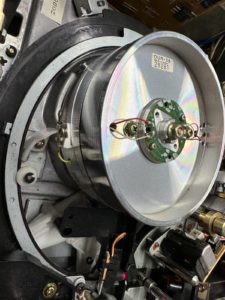If you’ve got a large number of U-Matic cassettes, digitization is essential.
Like all analog formats, Sony U-Matic tapes degrade over time. Oxidation, which reduces the quality of recorded images and audio, can set in within a few years, though the speed of oxidation depends heavily on the storage conditions. Today, most U-Matic cassettes are approaching the end of their intended storage lifespan.
If you have access to a working U-Matic tape deck, you might consider handling digitization on your own. For small numbers of tapes, this is generally the best option — but if you’re digitizing a large media library, professional services can provide more consistent results. Here’s why.
Professional digitization services can provide an excellent return on investment.
Every digitization project carries a cost. If you assign the work to members of your team (yes, even the interns), you’re making an investment; depending on your resources, that investment may be significant.
- The digitization process is limited to the tape’s native playback speed. If you have a single tape deck, at-scale digitization may take months or years.
- The process must be monitored to prevent artifacts from becoming part of the digital copy.
- Depending on the video content, operators may need to follow a strict process for compliance with security or privacy laws.
- If your library includes U-Matic tapes in both NTSC and PAL formats, you may need different equipment for playing back (and digitizing) each.
Ultimately, video conversion is a time-consuming task, particularly when you’re working with a small number of tape decks. Outsourcing the work can give you more control over your resources — and significantly reduce the project timeline.
Related: A Brief History of Broadcast Video Formats
U-Matic cassettes and players may require repair.

An internal view of a Sony U-Matic tape player.
Given the age of the U-Matic format, it’s safe to assume that any larger digitization project will include a number of damaged cassettes.
Cassettes may need to be re-spooled or transferred to new housings. If playback equipment fails, that problem will also need to be diagnosed and addressed — playing back a cassette in a damaged machine may cause permanent media loss.
Datarecovery.com operates laboratories with certified cleanrooms, which are appropriately outfitted for analog media repairs. We also test our equipment thoroughly and replace any worn or damaged components prior to the digitization process.
Related: Sony U-matic: Analog to Digital Conversion for Video Professionals
After digitization, your media files will need to be organized.
When you’re dealing with thousands of videos, organization can seem overwhelming. Each file must be named and categorized — which, again, requires dozens of hours of manual work.
Datarecovery.com provides custom media databases for U-Matic digitization projects. Each database is based on project-specific criteria, which may include:
- The date of each recording.
- The date of publication.
- The title of each program.
- Audio contents, analyzed via speech recognition artificial intelligence (AI).
Our custom databases enable our clients to find media instantly, which is essential for most applications. Whether you’re digitizing older broadcasts or future-proofing legal archives, a proprietary database can make an enormous difference.
Datarecovery.com provides U-Matic digitization services that optimize quality while delivering an excellent return on investment. If you’re ready to transfer your U-Matic library to a modern format, we’re here to help.
Contact us at 1-800-237-4200 for a free estimate or submit a request online.





